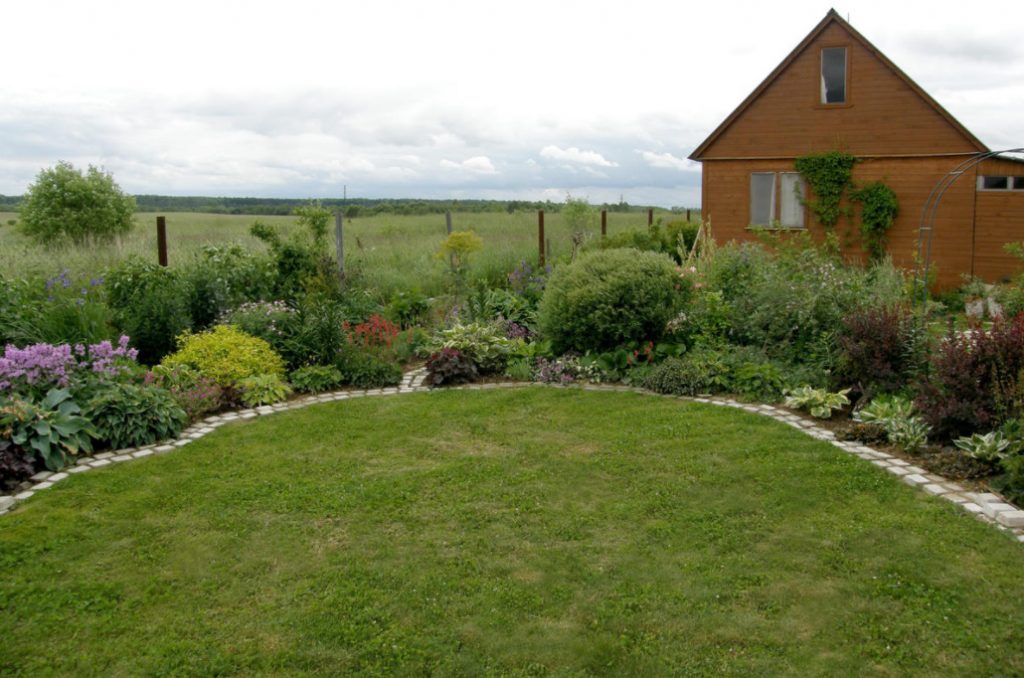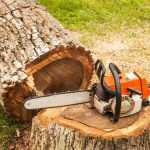There was a coup in my garden. Jump. A qualitative leap in the framework of a personal program of struggle for recreation in the dacha. A twist in the soul of an Amateur florist.
Until recently, my plot resembled a poorly structured collection of perennials. In the spring, I brought to the dacha a lot of pots and bags with new roots of perennials, bushes, seedlings and other various small things. A significant part of the summer was spent on setting up a place for newly acquired plants. They developed, crowded each other, required transplanting, finding the right place in existing flower beds or planning and developing new ones.
Gradually, the garden plot turned into a cluster of flowerbeds, between which ran narrow paths and pieces of lawn. The jumble of colors and leaves filled me with pride. Still – so many flowers! And how beautiful they are! And so much space to plant more and more.
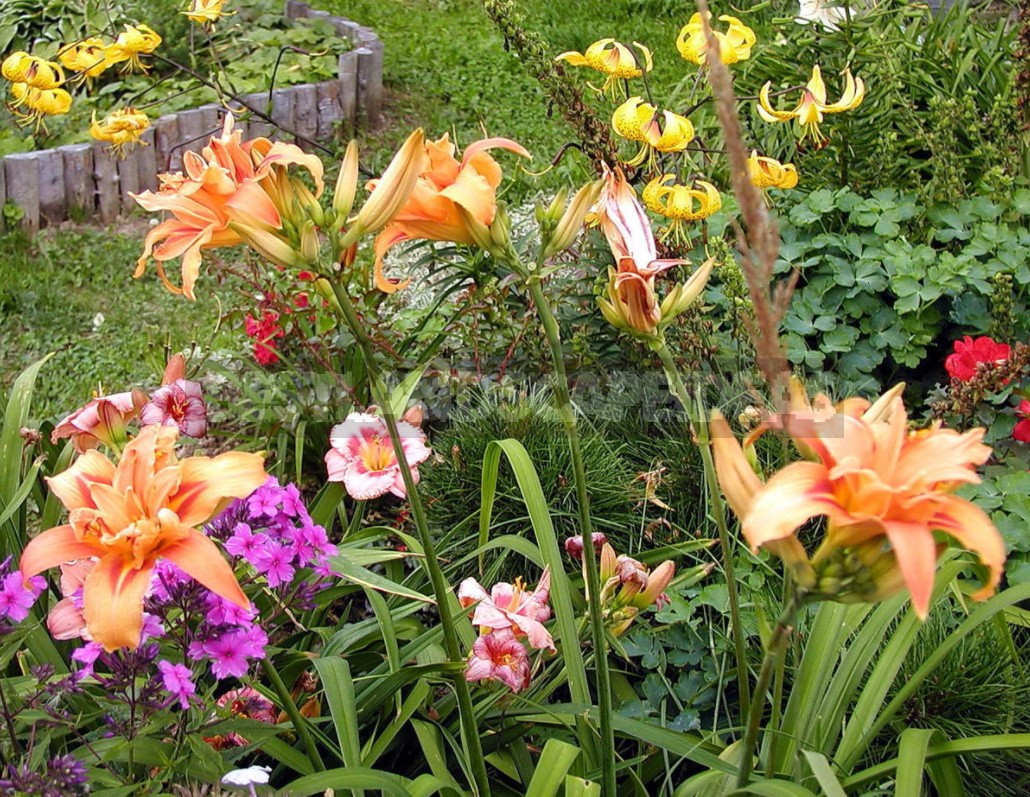
The main part of further dacha life consisted of preparation of planting places, constant dragging and replanting of plants. These actions, which used to bring such joy, now cause few positive emotions. I want to walk with garden scissors, removing unnecessary shoots and withered flower stalks, and instead of a scoop and a loosener, I often take a camera in my hands.
Where does this eternal redevelopment-weeding-transplanting, flower-garden slavery-come from? Who is to blame and what to do?
How and why do we become dependent on the garden?
One of the reasons is the huge number of purchases made after viewing numerous catalogs, reading articles in flower magazines, tips from flower growers on specialized forums, and the delight of friends and acquaintances. Beautiful photos and fascinating descriptions often give rise to one desire — to have a plant you like in a flower garden or, finally, temporarily buried in a vegetable bed.
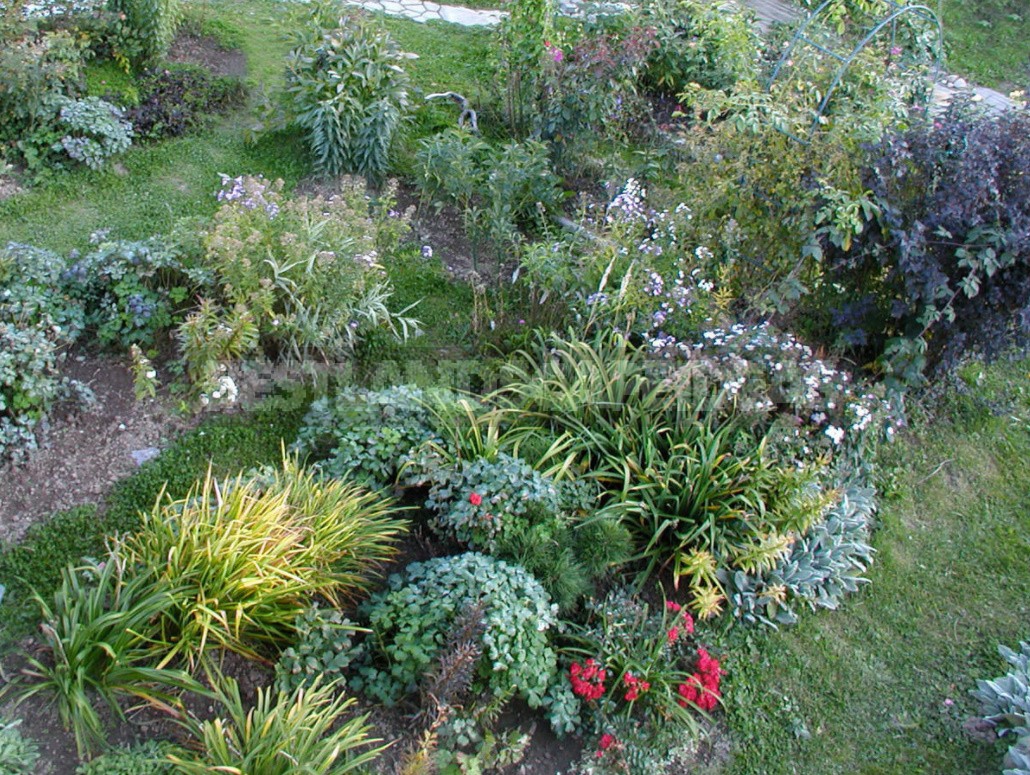
Another reason is an empty area at first, which the beginner wants to quickly fill with decorative color spots and accents. So he plants fast-growing plants. Here and multiply the ranks of the rootless irises and Phlox. In any case, on my dacha land, the story began exactly like this.
The novice grower is happy with the self-sowing of Ligularia and geraniums, and feels sorry for every root or stalk formed during division, pruning or transplanting. The surplus is attached “in the backyard”, behind the barn, at the fence, in front of the fence, distributed to neighbors and friends by Hobbies. To grind an extra Bush in a shredder, to throw the rhizome into the fire or into the trash seems like a crime, especially for a woman with her quivering approach — ” it’s alive!”.
On the road to liberation
Fortunately, many people have a certain “crisis of oversaturation”, fatigue from the need to care for a large number of plants and, as a result, the transition from quantity to quality, that is, active disposal of “mongrels”, unnamed and aggressively growing, as well as from too labor— intensive and too heat-loving crops. The acquisition and breeding of many perennials now seems to me a clear mistake.
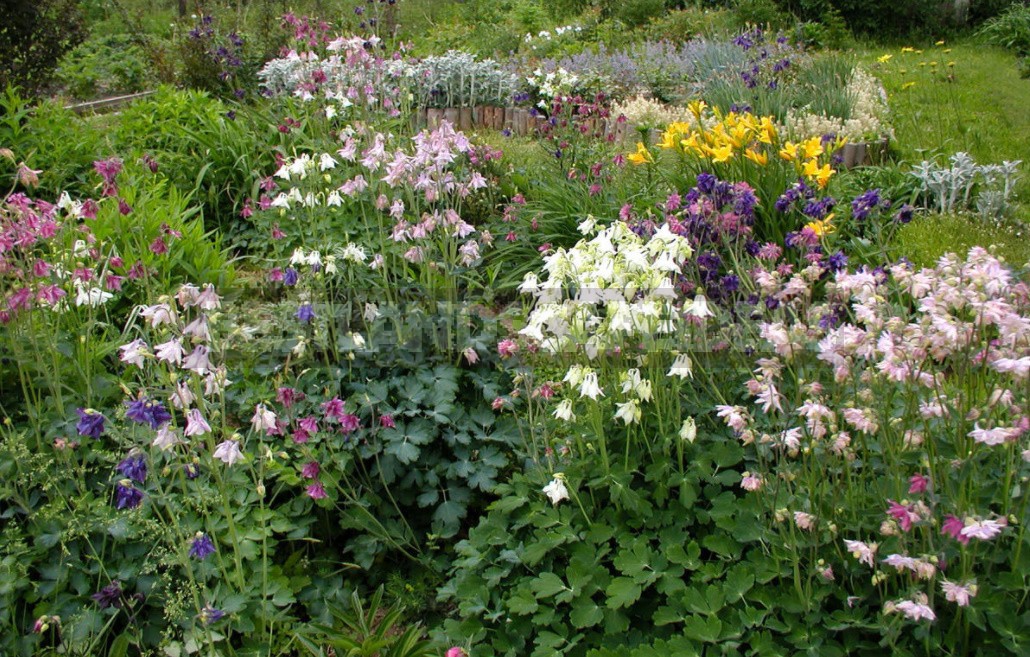
This year I almost got rid of Aquilegia. But a few years ago, in the company of her flower-growing friends, she was over the moon with joy, separating several seeds of each variety from gutted English bags with a toothpick. Soon I was proud of and admired the diversity of the catchment. And now…
Foliage in mid-summer is often affected by powdery mildew or gray rot, Browning boxes with their appearance persistently remind you that it’s time to cut them off (another concern!). If you do not follow the Aquilegia, self-seeding will clog half the site, diseases will spread to nearby plants, and in the flower garden there will be withered thickets of once juicy foliage.
The bearded irises. Wonderful flowering for a short period, and then-foliage, beaten by heterosporiosis, protection of rhizomes from Fusarium and gray rot, eradicated by the use of fungicides (another concern!). And, of course, time-consuming weeding, which consists in diligently pulling out dandelions and creeping ubiquitous Wheatgrass. And after all, you can not mulch these rhizomes, because they grow on the surface of the soil, as they love heat and sunlight.
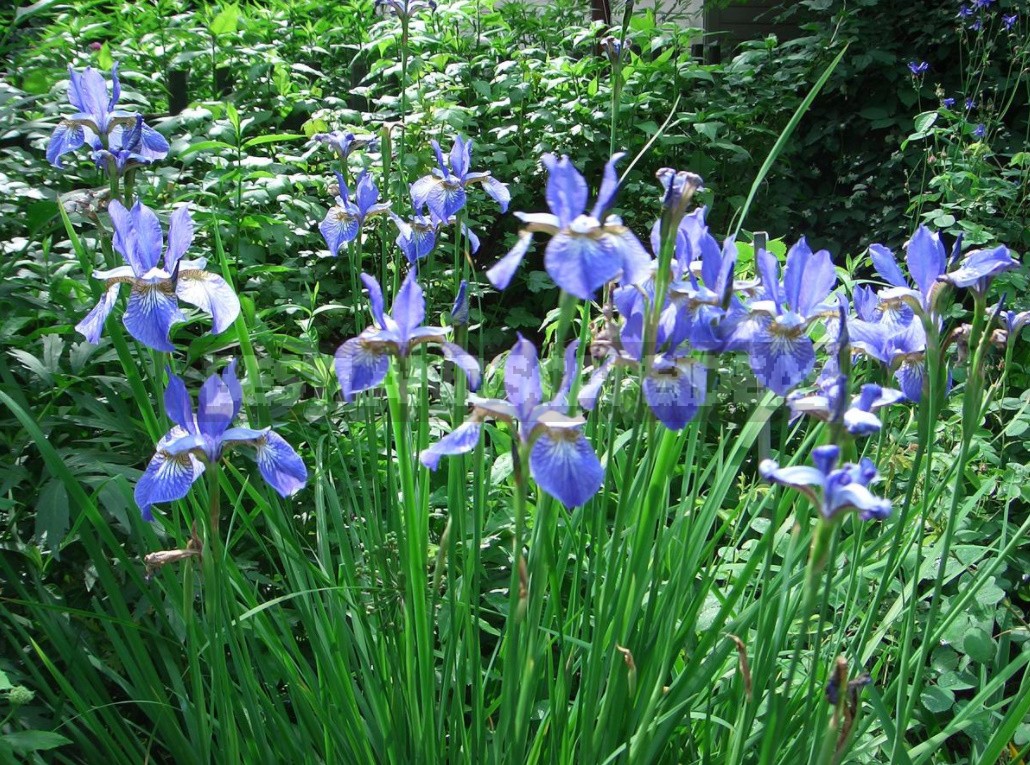
A small rhizome of the Siberian iris species I took as a gift from a friend. Iris is beautiful — blue butterfly flowers, healthy foliage, rare fungal diseases. Everyone likes this iris, but now for my flower beds it seems rustic. Within a few years, the small rhizome had grown to a mighty, hard rhizome the size of a large basin. To tear it out of the flower garden is possible only with the help of a crowbar, an axe and a man’s strength (Oh, this is another concern!).
Delphinium blooms luxuriously-no doubt. But after the decorative peak of the flower grower is waiting for trouble. Flower stalks should be cut, and as a result, a “hole” is formed in the mixborder, the vertical accent disappears, so you need to think of how to close the empty space. Do not forget that during flowering, fragile stems need to be tied to supports, and during the vegetative period to fight powdery mildew, Fusarium, bacterial wilt (something too much to worry about).
Terry daylily H. fulva var. kwanso is one of the first plants I purchased. Really beautiful. Hardy. Tall. But its underground stolons can crush almost any plant. I forgot about it for one season — the next year I barely found a mountain pine half a meter high in its thickets.
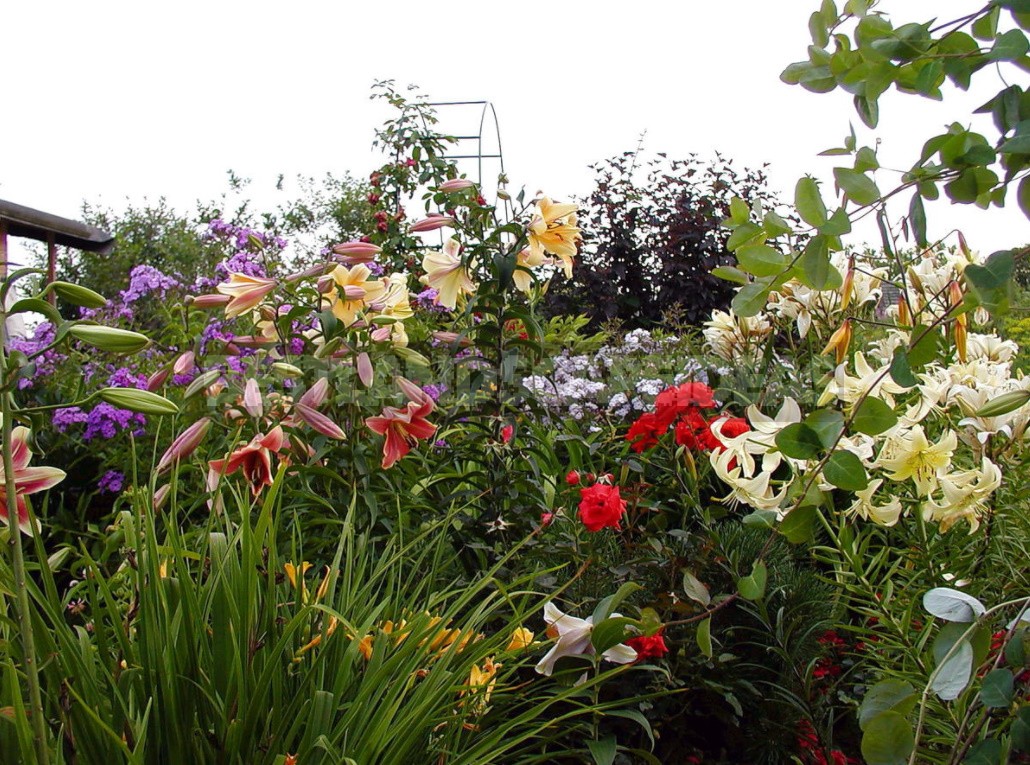
Even my favorite lilies began to cause… no, not rejection, but doubt about the need for the presence of a large number of hybrids on the site that require frequent transplanting, for example, LA-hybrids. They have a large reproduction rate, so on a fertile loam after three years, the nest of bulbs grows, the stems crowd each other, the flowers grow smaller. Save the dividing and transplanting. A place for a new location needs to be found, prepared, and also come up with-where to plant the surplus (again a concern!). I have enough space, and the land is good, but no one has canceled the pre-planting of the place.
Petasites fascinated me after reading an article about it in the flower grower’s Bulletin. The powerful leaves in the magazine photo were mesmerizing. After a while, a friend handed me a rhizome with the words: “Look, do not regret it. It’s not a plant, it’s a nightmare.” I soon became convinced of this.
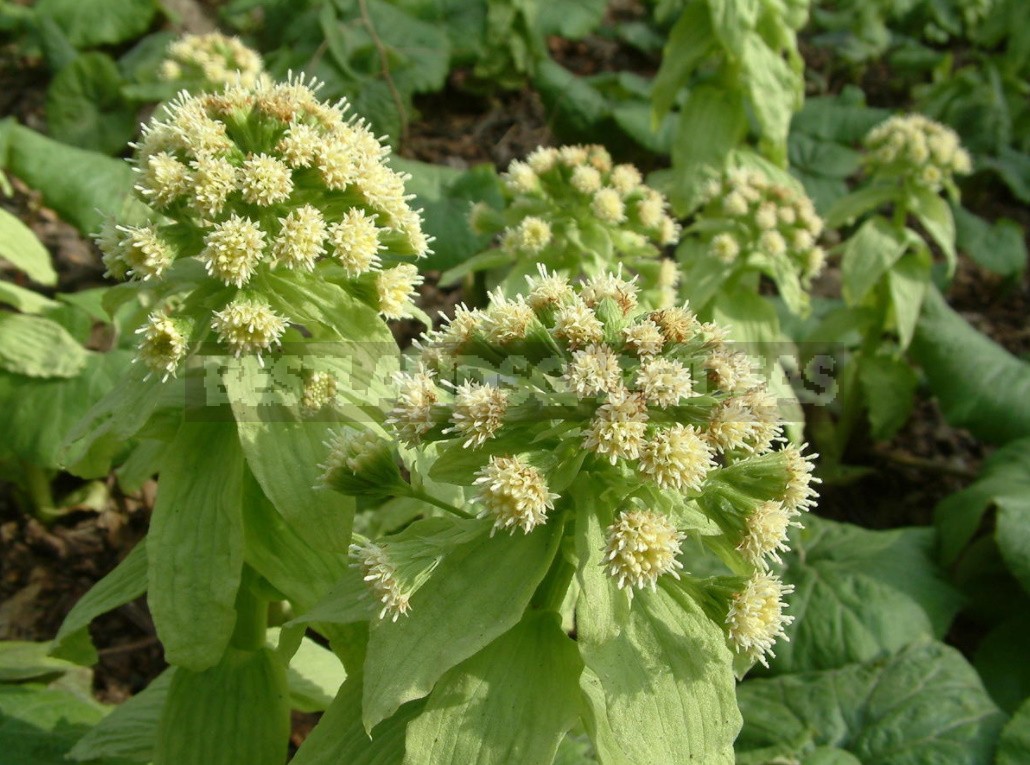
Petasites was not just an aggressor, on the wet fertile loam, it turned into a malicious invader. Once in power, he began to grow huge leaves not only in the shade, but also in the scorching sun, displacing all the neighbors. Digging in the protective strip did not give tangible results. The use of the herbicide also did not save — in the rainy summer, the drug is washed off without causing significant damage to the white-skinned animal. It seems to me that only digging can finally destroy this monster.
No more time-consuming and useless!
How to minimize hard work? After all, flower beds without care, of course, will become untidy, overgrown with weeds. In my opinion, in order for the flower garden and lawn to look neat, it is necessary to mark a clear border between them. This can be done by digging in a special plastic tape, regularly pruning the edge of the lawn or the device of the curb – from wooden blocks, stones, tiles.
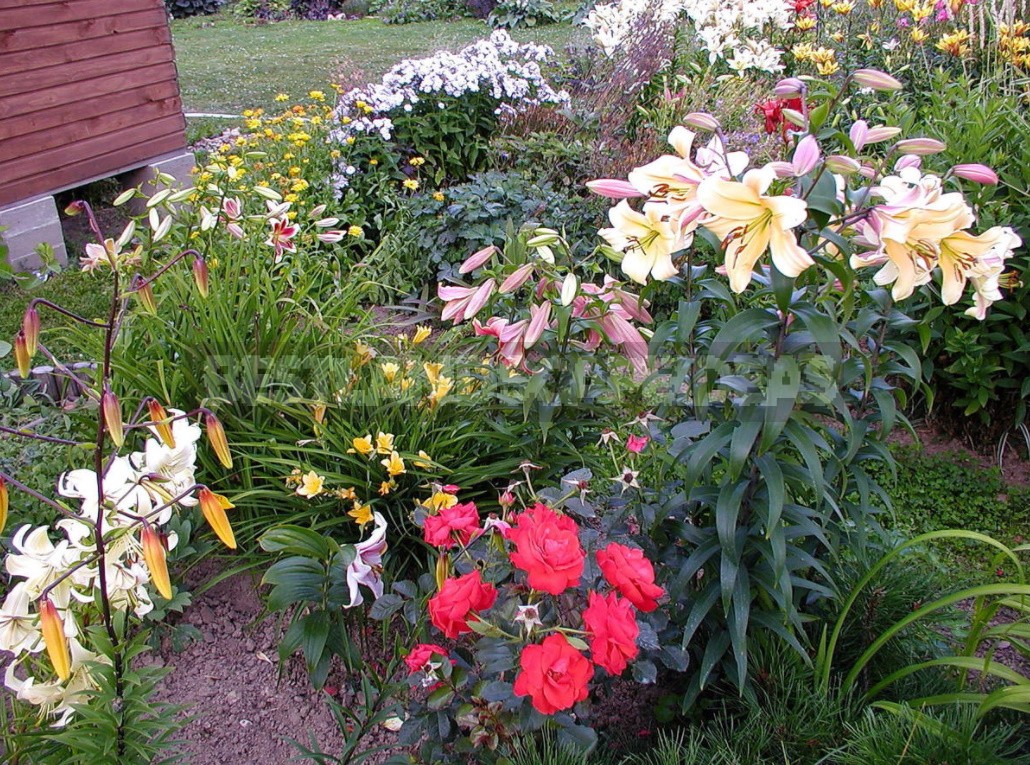
One of its flower beds (only one yet!) I managed to make it quite low-speed. The adjacent lawn is separated by a” frame ” of concrete tiles. In the third year of its existence, the plants had grown so much that there was no room for weeds. Small areas of open soil are mulched with mown grass. So it turns out that all care is reduced to the removal of dry leaves, flower stalks and excess shoots. Naturally, in the right periods, fertilizing, pruning of bushes and thinning of overgrown curtains is carried out.
I gave up the time-consuming or useless in my conditions of growing too thermophilic plants — I do not want to waste energy on experiments with magnolias and apricots. Forsythia and compendium of good in color, but when I will be able to enjoy a full bloom? It is necessary to bend and cover the summer growth, otherwise flowering will occur only in the lower tier of the Bush — where the flower buds are guaranteed to be covered with snow. So the bushes are ruthlessly uprooted. In their place, lilac lives and thrives — it is even more beautiful, and there is no trouble, except for pruning and seasonal fertilizing.
Tuberous begonias, Cannas, Calla lilies, dahlias need to be dug out every year in autumn, stored in winter, and planted in spring. No, in my new concept, these actions (and therefore these flowers) do not fit. I gave everything to my friends — let them try.
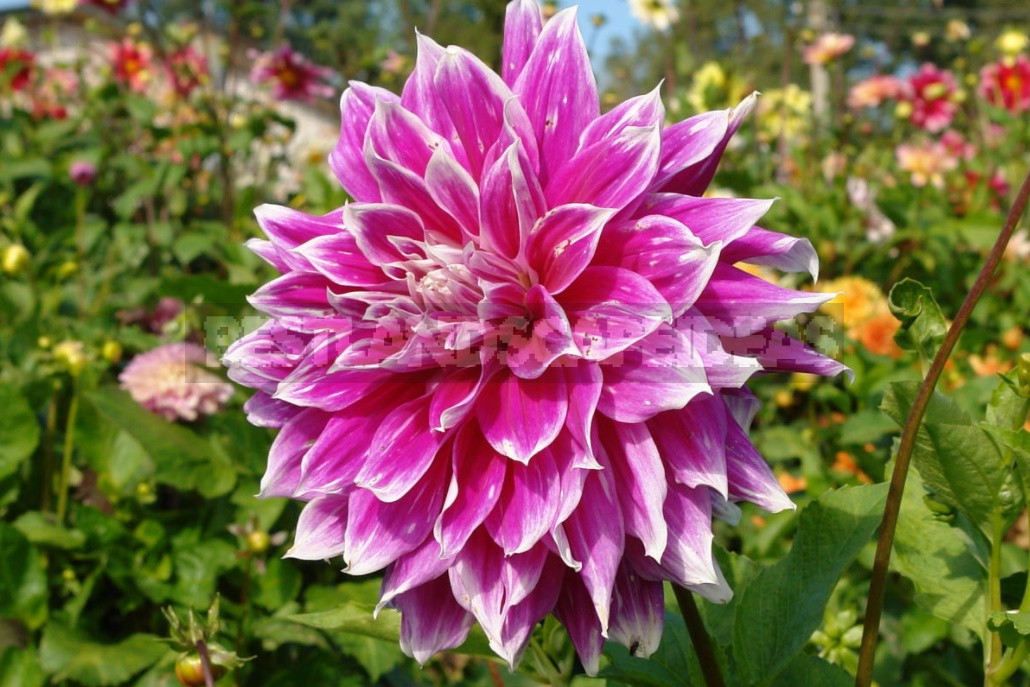
So last summer I devoted myself to getting rid of a significant part of the rustic, common, low-value, aggressive, troublesome and disliked plants. They were distributed in bushes and boxes. Wheelbarrows were taken out of the curtain in a compost heap and in the trash. Instead of a colorful “vinaigrette” and “patchwork quilt”, lawns are planned, sometimes framed by flower beds or small groups of shrubs.
To some, perhaps, my actions will seem blasphemous, but I do not feel sorry for the flowers at all. I feel sorry for myself. I don’t want to spend most of the day bent over, planting, weeding, and tying up. I don’t want to wipe my sweat away by straightening my lower back with difficulty. I want to swing in a hammock with a book, drink mint tea on the veranda, listening to music or birdsong. Most of the time I want to be idle, or rather, to live every minute of my life with a sense of pleasure, because I am tired of experiencing the pleasure of plowing.
